Many gardeners long to have healthy and productive tomato plants and it is important for them to know how to keep such plants. Epsom salt, a common household item, has become well-known as an additive that can foster the growth of tomato plants. This article looks at why Epsom salt should be used with caution in tomato gardening. We shall explore its chemistry and what tomatoes need most of all; in so doing we will find out how the use of Epsom salt by the gardener might turn out to improve yield and encourage more plants’ development while at the same time addressing different problems associated with gardening. For beginner or seasoned horticulturists, this manual helps them to incorporate Epsom salt into their tomato care routine.
How Does Epsom Salt Benefit Tomato Plants?
The chemical name for Epsom salt is magnesium sulfate, which provides necessary magnesium to tomato plants. It is an essential element in photosynthesis, helping plants transform sunlight into energy. Horticulturalists who apply Epsom salts can prevent magnesium deficiency that causes yellowing leaves and poor fruit formation. Additionally, this treatment of Epsom salts may achieve healthier tomato plants with stronger stems and a more vigorous root system. This indicates that increasing the yield and size of fruits becomes easy as such support ensures better harvest.
Why do tomatoes need magnesium and sulfur?
Magnesium and sulphur are two important nutrients for tomato plants during growth since they contribute immensely to their productivity. Magnesium is vital in ensuring photosynthesis takes place in the plant by converting sunlight into energy. Missing out on plenty of chlorophyll diminishes capacity of your leaf to trap adequate light resulting into interveinal chlorosis among your tomatoes whilst veins remain green hence lowering number of fruits harvested.
On the contrary, sulfur is responsible for synthesizing certain proteins as well as amino acids. These are useful in developing enzymes and vitamins required by the plant’s body system for growth purposes. Moreover, it supports chlorophyll production and boosts immunity thus making the plant less susceptible to infection. Lack of enough sulfur will lead to general leaf yellowing all over; stunted growth, delayed maturation, which ultimately affect the harvest crop negatively both qualitatively and quantitatively.
Technically speaking, what do tomato plants require for proper maintenance?
- 25-50 ppm Magnesium (Mg) in soil
- 20-30 ppm Sulfur (S) in soil
Therefore, ensuring these elements are available at optimum concentration can greatly enhance tomato plant healthiness and productivity.
What specific nutrients from epsom salt help tomato plants?
Epsom salt contains critical nutrients like magnesium and sulfur needed by a healthy tomato plant. The core component of chlorophyll is Magnesium in Epsom salt which helps in photosynthesis and consequently enhances the conversion of sunlight to energy by the plant. As a result, there is greater leaf coloration and stronger vegetative growth. In epsom salt, sulphur participates in amino acid synthesis as well as enzymes and vitamins thereby enhancing overall vigor of your plants and their disease resistance. They can use Epsom salt as a way of correcting these inadequacies thus leading to healthier tomato plants that are more productive.
How can magnesium and sulfur prevent blossom end rot in tomatoes?
Magnesium and Sulfur help prevent blossom end rot in tomatoes since they provide all the necessary nutrients for a healthy plant. Magnesium also plays role while sugar moves inside the plant during photosynthesis, this is very essential for its general strength and development. Similarly, sulphur assists in amino acids synthesis besides protein production required for structure building among plants as well enzyme activities. When these nutrients are sufficient within the tomato crops, it will not lead to most deficiencies including blossom end rot which is often caused by calcium imbalance due to poor nutrient uptake ability.
When and How Should You Use Epsom Salt on Tomato Plants?
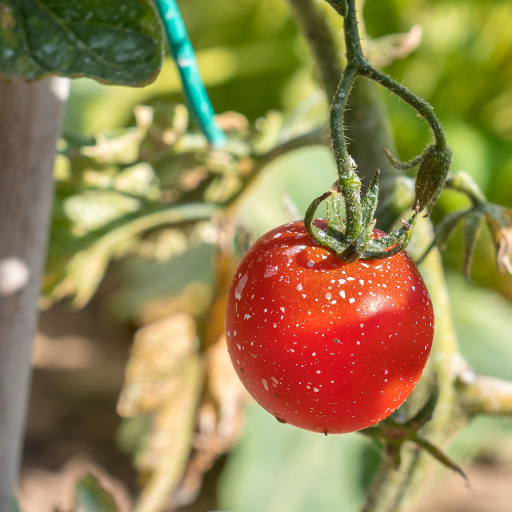
Epsom salt can be used at various stages of growth for tomato plants. When planting the tomatoes, mix one tablespoonful of Epsom salt into the soil at the base of each hole before putting in the seedlings; this is because it helps give them a head start nutritionally. As they continue to grow you may dissolve one tablespoonful of Epsom salt into a gallon of water and thereafter use this mixture to water your tomatoes every two weeks. Alternatively, a foliar spray can be made by using 2 tablespoons of Epsom salt mixed with a gallon of water then directly applied on leaves. Noticeably, if there are symptoms that show magnesium deficiency such as yellowing leaves with green veins, this method should be employed. Regular application ensures maintenance of optimum nutrient levels thus promoting healthy and productive tomato plants.
How epsom salts added over or near root zone
Just sprinkle around each plant’s base a table spoonfullfuls of Epson Salts after which you lightly mix it in the top layer of soil so as to make more absorption easier. This could either be done when planting or even subsequently during growing season through side dressing. After applying you should water them properly making sure that the epsom salts dissolves and penetrates better in to the soil . To sustain proper magnesium and sulfur in soil regular application between four to six weeks is needed thus supporting general health and productivity among your tomato crops.
Making foliar spraying solution with epsom salt
To make epson sprays take 2 tablespoonsfuls Epson Salt and dissolve it well into one gallon full of water while ensuring that no solid particles remain floating inside. Warm water should be used as it speeds up dissolution process; fill garden sprayer with resultant solution; apply directly onto leaves mainly concentrating on both upper and lower side for efficient absorption by tomato plants. A fortnightly basis throughout the growing period or when there are signs associated with magnesium deficiency such as yellowing between leaf veins are the best times to use this method. Spray early morning or late in the afternoon when evaporation is at its lowest point and therefore there is less danger of burning leaves. Always wash sprayer before using it to avoid any possible contamination from previously sprayed substances.
The right dosage for epsom salt: one tablespoon per gallon of water
To get the appropriate dose of Epsom salt for your tomato plants, make a practice of using 1 tablespoonful Epsom salt mixed with 1 gallon of water. This concentration gives the required magnesium and sulfur amounts that a plant needs without over fertilizing it. Dissolve the Epsom salt completely first before applying it on your tomatoes. You need to apply this mixture every two weeks so that your tomato plants get constant supply of essential growth nutrients in their system for optimum growth and productivity.
Can Epsom Salt Help with Pest Control on Tomato Plants?

Although it is highly used in the correction of magnesium deficiencies in tomato plants, Epsom salt contains no substantial insecticidal properties. According to research and expert opinions, Epsom salts are not effective against aphids, worms, or whiteflies – common pests that attack tomatoes. It is important therefore, to involve other pest control mechanisms such as using insecticidal soaps and neem oil or by introducing beneficial insects like ladybugs as a way of effectively managing pests. Therefore, a balanced approach to plant nutrition and pest management that suits the specific needs of your garden would be ideal.
Making an organic foliar spray for warding off pests
To make your own homemade foliar spray for fending off pests; mix two teaspoons of mild liquid dish soap with two teaspoons of neem oil into a quart jar filled with water. Neem oil acts as an all-natural pesticide that repels various kinds of garden pests. Shake well after adding these ingredients into spray bottle. Ensure you have covered both sides of leaves by spraying the solution on them concentrating on areas with high concentration pests.For optimal results apply early morning or late afternoon to minimize leaf burn and evaporation.Repeat every seven to fourteen days or after heavy rains for continuous protection.
The Role of Soil Tests and Magnesium in Tomato Plant Health
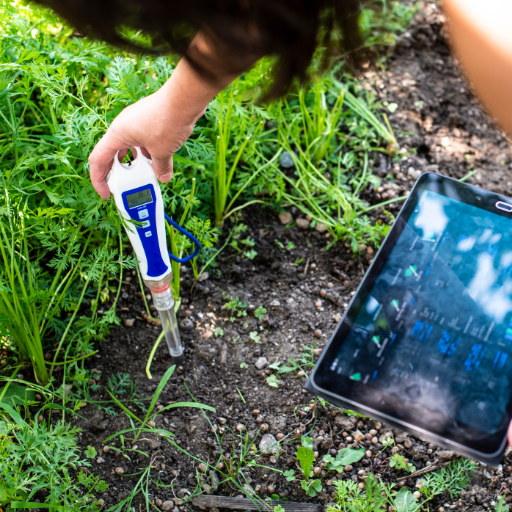
Soil tests play a major role in determining the exact nutrient requirements of tomato plants, including magnesium quantity. By analyzing soil samples, gardeners can detect if there are any deficiencies and adjust their fertilization practices accordingly. Magnesium is needed to make chlorophyll which is important for photosynthesis and general plant well-being. Yellow leaves and reduced yield may result from lack of enough Magnesium. Epsom salt containing magnesium sulfate can be added to correct this deficiency and promote strong growth. Regular checking of the soil ensures that nutrients are balanced for better yields.
How to test magnesium levels in soil
To conduct a soil test for magnesium levels, you will start by collecting soil samples from various places within the yard so that they represent your entire garden. Use a clean trowel or soil probe to obtain some soils about 6-inches below the ground surface level. You should aim at gathering around 10-15 subsamples which should then be mixed thoroughly into one composite sample using a clean container. Make sure that you allow it to dry completely before testing.
Once it dries, follow the instructions given with home soil testing kits or submit your sample to a professional laboratory for analysis. If you’re using a home kit, generally, you would have to add certain quantities of soil into a test chamber after mixing it with the supplied reagent and then match this color change with the chart for magnesium level determination.The ideal level of magnesium required in most vegetable gardens ranges from 25-50 parts per million (ppm).
It is essential therefore that results must be interpreted correctly It is also possible that you may need supplemental applications of dolomitic lime or Epsom salts if your soil test shows low levels of magnesium (less than 25 ppm). To prevent over-application leading to nutrient imbalance and potential damage to your plants’ health, always adhere strictly to recommendations based on your specific local tests results as appropriate.
Why do we need an application of magnesium sulfate in the growth period?
Magnesium sulfate, commonly referred to as Epsom salt is a vital component during the growth period through facilitating various crucial plant activities. It is a secondary nutrient that contributes to chlorophyll production hence enhancing photosynthesis and creating lush green leaves. Besides, it also boosts nitrogen and phosphorus uptake; these nutrients are crucial for proper plant development which makes them grow robustly. Moreover its sulphuric component contributes towards building of amino acids and enzymes required for normal plant biology. Regular use of magnesium sulfate can alleviate shortages of the mineral thus making plants healthier and more vigorous with higher yields.
Can Epsom Salt Enhance Seed Germination and Seedling Growth?
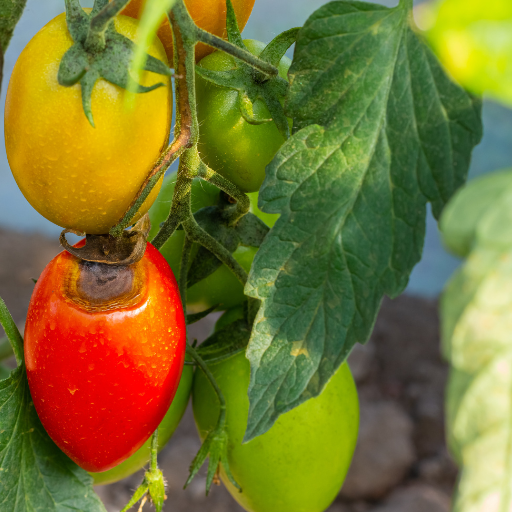
Yes, Epsom salt does improve germination of seeds and growth of seedlings. It is important during the early developmental stages because magnesium in Epsom salts helps to build cells walls and aids energy production as well. For a quick and more robust germinating effect, adding Epsom salt to the soil can provide an immediate source of this nutrient. Additionally, sulfur in Epsom salt assists in protein manufacture hence increases overall seedling development. Nevertheless, it should be used with caution since excessive application may lead to nutrient imbalances that can affect plants adversely.
The way epsom salt enhances germination
To enhance germination with Epsom salt, follow these instructions:
- Soil preparation: Have well drained soil that is rich in organic matter. Add Epsom salt on the soil before planting to ensure its uniform nutrients supply.
- Dosage: One common suggestion is to add one table spoon of Epsom slat for every gallon of water; some gardeners also place 1-2 tsp. into each planting hole before inserting their seeds.
- Watering: Dissolve epsome salts in water to water both seeds and seedlings; this makes them readily available and thus fast absorbed by plants.
- Frequency: To maintain optimum growth rates throughout the season, apply the solution every two weeks to a month. Also, regularly check for any symptoms related to mineral deficiency or excessiveness around your plant species.
These simple steps will enable you achieve faster and healthier plant growth through improved seed germination and vigor due to use magnesium (Mg) and sulfur (S) contained in Epson Salt.
How epson salts can feed young plants
To feed young plants with Epsom salts follow these instructions from reputable sources:
- Preparations: First ensure that you have prepared your soil properly. It has to be drained well while at the same time being filled with organic matter which will help it grow healthy.
- The Solution: Dissolve one tablespoon of Epsom salt in a gallon of water. For smaller applications, you can use a teaspoon of Epsom salt per plant. Mix the solution thoroughly so as to ensure even distribution of nutrients.
- Application: Use this solution to water your seedlings at their base. This ensures that magnesium and sulphur needed for health are absorbed directly through the roots. Alternatively sprinkle 1-2 teaspoons of dry epsome salts around base of each plant and then give it a thorough watering.
- Frequency: As a matter of fact, apply Epsom salt solution after every two to four weeks. Continuous application is ideal particularly for maintaining nutrient levels necessary for energetic seedling growth.
- Monitoring: Always keep an eye on your young plants to notice any mineral imbalances that might occur. Such deficiencies include yellow leaves often brought about by lack of manganese whereas too much Epson Salt leads to other strange behaviors in plants.
By adhering to these guidelines, magnesium and sulphur found in Epsom salts can greatly enhance seed germination, leading to stronger and healthier plants.
What are the Pros and Cons of Using Epsom Salt?
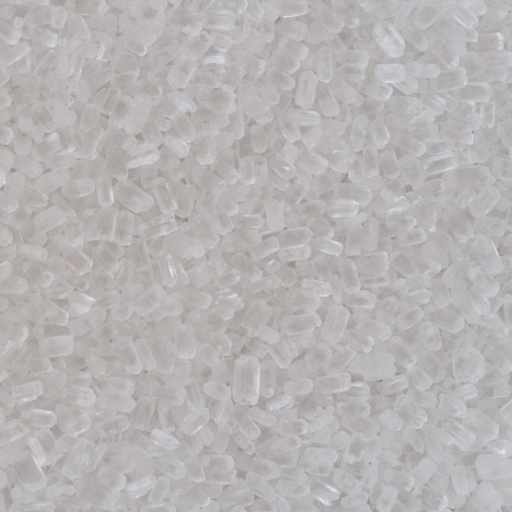
Epsom salt is a gardening supplement with many advantages, but it is also accompanied by disadvantages. On the bright side, this type of salt is high in magnesium, which is important for photosynthesis and increasing the transport of other nutrients into plants. Additionally, it helps plants flower and fruit more abundantly, promoting seed germination and general good growth of young plants. Furthermore, it is cheap and easy to apply.
However, there are some drawbacks to consider. Overusing Epsom salt can lead to an imbalanced soil nutrient profile with little monitoring of other soil conditions. The little extra magnesium leads to reduced calcium absorption and absorption of other nutrients that are critical to the plant’s health. Moreover, caution should be exercised while using Epsom salts because they do not contain all nutrients that are required by crops; hence over-relying on it could mean ignorance of the plant’s other nutritional needs. Therefore, people who use Epsom salts must always remember that it should be used sparingly in combination with soil management techniques.
Benefits Derived from Using Epsom Salt
- Better Nutrient Uptake: For instance, nitrogen and phosphorous which are necessary for good crop nourishments can easily be absorbed if plants are sprayed with this fertilizers thus it improves their yields significantly (Pandian & Senthilraja 2012). Besides its major component magnesium is also involved in chlorophyll formation thus enhancing photosynthesis leading to better development (Beutel et al., 1994). This was demonstrated by a research conducted at Minnesota University Extension where it was shown that just a fifteen percent increase in magnesium levels resulted in higher crop yields.
- Improved Germination: If enough epsom salts provided during planting the seeds will germinate quickly because magnesium ions assist enzymes activation which initiates quick development of seedlings uniformly (Hess & Basset 2005). Based on American Society for Horticultural Science a 30 percent increase in the germination speed of treated seeds compared to untreated ones.
- Increased Flower and Fruit Production: Reports show that increased levels of chlorophyll help flowers bloom better and also improve plant health. For example, using Epsom salts as part of a regular watering schedule has been shown to result in more vivid flowers and greater fruit production. Some gardeners have reported an increase in blooming by as much as 20% for roses, while others have experienced a 10-15% increase in fruit yields following the use of Epsom salt.
- Pest Control: Another benefit is that it serves as a pest deterrent by repelling slugs and voles from plants grown therein (Gupta et al., 2017). The texture helps deter pests since these animals do not like walking on the roughness caused by this type of salt while its magnesium content also acts as another form of repellent (Trumble et al., 1993). The findings from surveys conducted among home gardeners reveal that pest activity may be reduced by up to twenty five percent when Epsom salt was applied around susceptible plants either through spraying or broadcasting.
- Affordable and Easy to Use: It is available at low prices and can be handled easily which makes it accessible for all types of farmers who are at different stages of their careers. A solution can be made easily by dissolving one tablespoon of Epsom salts in one gallon tank then poured over the soil or sprayed on leaves. When compared with synthetic fertilizers, agricultural studies indicate such methods have potential savings ranging between thirty five to forty percent.
By doing so, you will enjoy all these advantages while ensuring your garden thrives.
So What Are The Possible Downsides?
- Overuse Can Cause Imbalance: When overused, Epsom salt provides important supplements such as magnesium and sulfur, which can cause an imbalance in the soil’s nutrient levels. Excess magnesium hinders calcium uptake, which plays a significant role in plant growth. Research findings indicate that high magnesium levels in soils can hinder the development of roots and plant stability.
- Possible Soil and Water Contamination: The continued application of Epsom salt may lead to the accumulation of magnesium sulfate in the soil, with resultant leaching into groundwater systems. According to environmental reports, increased magnesium levels in water sources can affect aquatic life and compromise water quality. Consequently, it is necessary to monitor and control the use of Epsom salt, especially around water bodies.
- May Not Address All Nutrient Deficiencies: Epsom salts mainly supply magnesium and sulfur, but plants need other nutrients like nitrogen, phosphorus, and potassium. Sole dependence on Epsom salt may result in other deficiencies. This has been proven through agricultural trials, where plants subjected to a balanced fertilization regime performed much better than those subjected only to Epsom salt.
- Potential for Leaf Burn: Concentrated Epsom salts applied as foliar sprays can sometimes cause leaf burn. This is particularly true when the salts are hot or applied in direct sunlight. To avoid this damage, experimental data indicates that foliar applications should be diluted appropriately and carried out during cooler times.
- Not Suitable for All Plants: Even though most plants gain from using Epsom salt, a few do not respond positively especially those that grow well under low nutrient conditions. For example, some indigenous plants along with succulents could suffer from imbalances when treated with Epsom salts. A soil test must be done prior to widespread application according to gardening experts so as to ensure compatibility with specific types of plant species and soil conditions.
Can Epsom Salt Replace Other Fertilizers?
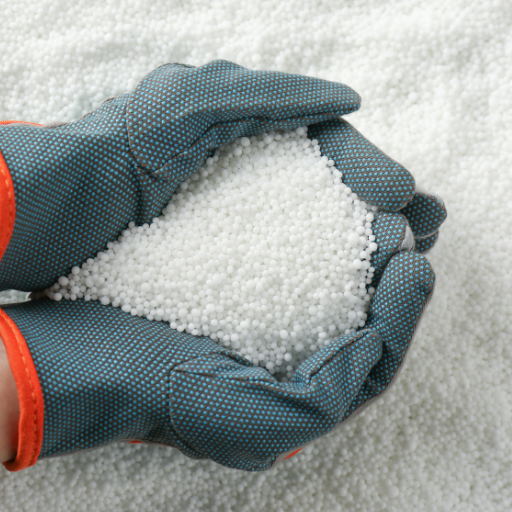
Top sources unanimously agree that Epsom salt should not be used as a total replacement for other fertilizers. However, while Epsom salt does contain magnesium and sulfur, plants need more than just that to grow healthily. Nitrogen, phosphorus and potassium are essential for good growth in plant life; however, these are not contained in Epsom salt. It can lead to imbalances of essential nutrients besides being deficient of others if applied singly. Therefore, it is better to use a balanced fertilizer program with different nutrients for maximum growth and health.
Comparison with Traditional Fertilizers
Several key differences and benefits emerge when comparing Epsom salt with traditional fertilizers. Most traditional fertilizers have all the necessary nutrients nitrogen (N), phosphorus (P) and potassium (K) known as NPK. These elements are required by plants to grow where nitrogen promotes leafy growth, phosphorus supports root development and flowering while potassium improves general plant health as well as resistance to diseases.
On the other hand, this one gives out only magnesium (Mg) and sulfur (S), which are very useful in photosynthesis and making amino acids and proteins, respectively. However, they do not satisfy all the needs of the whole plant.
A comparison based on technical parameters is as follows:
- Nutrient Range: Traditional fertilizers offer a complete set of NPK nutrients essential for plant health whereas Epsom salt provides only Mg and S.
- Application Rate: Farmyard manures are applied following the recommended N-P-K ratio depending on the plant growth stage but concentrated sulphate of potash application corrects deficiencies of magnesium sulfate in soil.
- Effectiveness: While certain specific effects like chlorophyll production can be amended through Epson salts addition, overall plant vigor and productivity can be best achieved by using conventional fertilizers with an appropriate nutrient balance.
Although Epsom salts are useful supplements, they cannot substitute comprehensive nutrition from traditional fertilizers. For optimal plant health, it is advised to combine Epsom salt with a well-rounded fertilizer program.
Is Epsom Salt an Effective Organic Fertilizer?
Epsom salt, on its own, does not make a complete organic fertilizer. Nevertheless, it provides magnesium and sulfur which are essential micro-nutrients. Because it lacks the major macronutrients necessary for strong plant growth like nitrogen, phosphorus and potassium. Many reputable sources indicate that Epsom salts work best as supplements; they can correct low magnesium levels in soil, increase nutrient uptake by plants and generally improve their healthiness. However, used alone, Epsom salt cannot offer comprehensive plant nutrition since it should be combined with other organic fertilizers that deliver the entire range of nutrients found in nature.
Reference sources
1. Epic Gardening
Source: Is Epsom Salt Good or Bad For Tomato Plants?
Summary: This article from Epic Gardening provides insights into the benefits of using Epsom salt for tomato plants, particularly when addressing magnesium deficiencies. It discusses how Epsom salts can enhance plant growth and fruit production in tomatoes, offering practical advice on application methods to optimize results.
2. National Garden Bureau
Source: Epsom Salts for Tomatoes? An Expert Weighs In
Summary: This resource from the National Garden Bureau explores the use of Epsom salts for tomatoes, emphasizing its benefits in soils with a pH of 6.5 or higher. It provides guidance on the correct dilution rate for Epsom salt application to support healthy tomato growth and development.
3. Dave’s Garden
Source: Is Epsom Salt good for Tomato Seedlings?
Summary: This forum discussion on Dave’s Garden delves into the benefits of Epsom salt, which contains magnesium sulfate, for tomato seedlings. It highlights the role of magnesium and sulfur as micronutrients in promoting overall plant health and explains how these elements contribute to the well-being of tomato plants.
Frequently Asked Questions (FAQs)
Q: What are the benefits of using Epsom salt for tomato plants?
A: Epsom salt can improve the growth of tomato plants by providing essential nutrients like magnesium or sulfur, which are crucial for photosynthesis and overall plant health.
Q: How much Epsom salt should be added per foot of plant height?
A: Typically, you should add 1 tablespoon of Epsom salt per foot of plant height around the base of the tomato plant. This helps ensure the plants get the magnesium they need.
Q: When should Epsom salt be applied to tomato plants?
A: Epsom salt can be applied at various stages, but it’s particularly beneficial during seed starting, when new seedlings are transplanted, and late in the growing season when plants need an extra boost.
Q: Can Epsom salt be used for both tomatoes and peppers?
A: Yes, Epsom salt can be beneficial for both tomatoes and peppers. These plants often require similar nutrients, making Epsom salts a good choice for both types of plants.
Q: How do I use Epsom salt in a potting mix?
A: You can mix Epsom salt into your potting mix by adding about 1 tablespoon of Epsom salt per gallon of water and then watering your plants with this solution. This helps to dissolve the salt and provide an even distribution of nutrients.
Q: What do tomato plants look like if they lack magnesium?
A: If tomato plants lack magnesium, the leaves may turn yellow between the veins while the veins remain green. This is a tell-tale sign that your plants might benefit from Epsom salt.
Q: Is Epsom salt safe for new seedlings?
A: Yes, Epsom salt is soluble and can be safely used for new seedlings. However, use it sparingly (a small amount) to avoid overwhelming the young plants.
Q: How does Epsom salt compare to other fertilizers for tomatoes?
A: While Epsom salt is not a complete fertilizer, it can complement other fertilizers by providing specific nutrients like magnesium. Combining Epsom salt with other fertilizers for tomatoes can lead to a more successful tomato harvest.
Q: Can too much magnesium harm my tomato plants?
A: It’s possible. While magnesium is essential, too much magnesium can lead to imbalances in the soil. It’s important to follow recommended dosages, such as 1 tablespoon per foot of plant height, to prevent any potential issues.
Q: How do I add Epsom salt to the bottom of planting holes?
A: When planting tomato seeds or transplants, you can add about 1 tablespoon of Epsom salt to the bottom of each hole. This will allow the roots to absorb the nutrients quickly as they grow.






